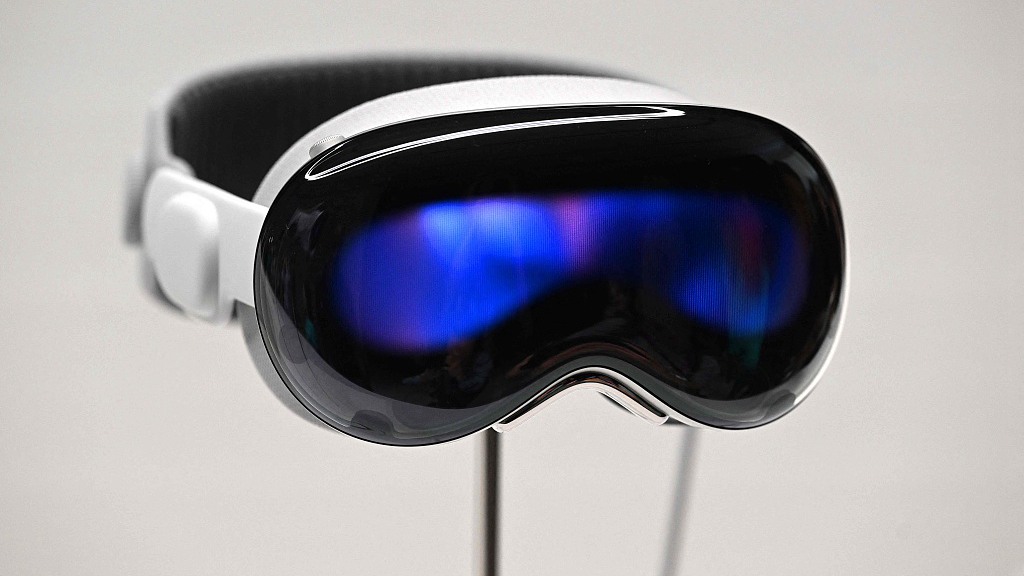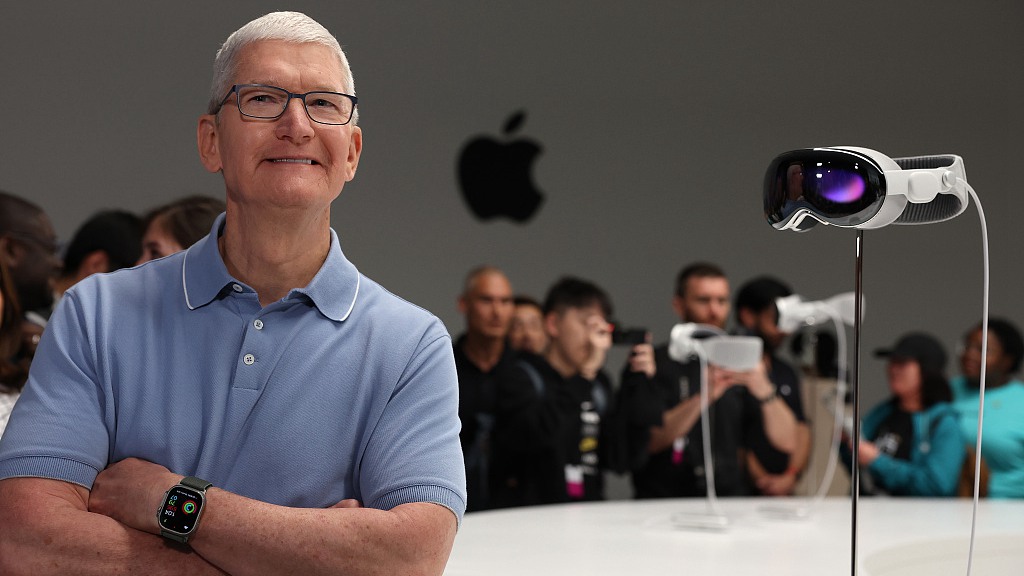
Apple's new Vision Pro virtual reality headset displayed during Apple's Worldwide Developers Conference at the Apple Park campus in Cupertino, California, June 5, 2023. /CFP
Apple's new Vision Pro virtual reality headset displayed during Apple's Worldwide Developers Conference at the Apple Park campus in Cupertino, California, June 5, 2023. /CFP
Apple on Monday unveiled a costly augmented-reality (AR) headset called the Vision Pro in its riskiest bet since the introduction of the iPhone more than a decade ago, barging into a market dominated by Meta.
At its annual developer conference, Apple also introduced a raft of new products and features, including a 15-inch MacBook Air, a powerful chip called M2 Ultra, improvements to its iOS software and a long-awaited tweak to prevent its autocorrect from annoyingly changing a common expletive to "ducking."
The Vision Pro will start at $3,499, more than three times the cost of the priciest headset in Meta's line of mixed and virtual reality devices.
The headset will test a market crowded with devices that have yet to gain traction with consumers and put it in direct competition with Facebook-owner Meta after years of clashes between the companies over issues like user privacy and control of developer platforms.
Apple emphasized the novelty of the headset's AR features as well as the sports and entertainment partnerships it would offer. The device will use a new chip called R1 that will process information from its sensors in less time than the blink of an eye, Apple said.
Users of the Vision Pro will be able to select content inside the goggles with their eyes, tap their fingers together to click and gently flick to scroll, while also using a three-dimensional camera and microphone system to capture videos and pictures than can be viewed in 3D later.
In its most visually striking difference from Meta's headsets, the device also has an exterior display that shows the user's eyes to people in the outside world.
The exterior screen goes dark when a user is fully immersed in a virtual world. When a person approaches a user who is in full virtual mode, the headset will show both the user and the outside person to each other, an AR advancement over Meta's devices, which show a more basic video feed of the outside world.

Apple CEO Tim Cook stands next to the new Apple Vision Pro headset. /CFP
Apple CEO Tim Cook stands next to the new Apple Vision Pro headset. /CFP
"It's the first Apple product you look through, not at," Apple CEO Tim Cook said.
Apple said it has been working with Adobe and Microsoft to put their apps on the new headset, as well as Unity, a technology company that works with game developers.
The Vision Pro has two hours of use with an external battery, which Apple said would reduce the weight on the user's head. However, the device must be plugged into the wall or battery pack and there is no standalone use.
It will be available early next year in the U.S. with more countries coming later in 2024.
Meta Chief Executive Mark Zuckerberg has outlined his vision for using headsets to dip in and out of a "metaverse" where people can meet virtually to work, play and spend.
Its virtual reality headset, the Quest, remains the top-selling device in a category that so far has mostly appealed to video game players looking for even more immersive experiences. It offers about two hours of battery life directly on the headset, without an external battery pack.
Meta also offers Microsoft apps on its Quest devices.
Microsoft also has had limited success with HoloLens, a mixed-reality headset released in 2016, although the software maker earlier this year insisted it remains committed to the technology.
Magic Leap, a startup that stirred excitement with previews of a mixed-reality technology that could conjure the spectacle of a whale breaching through a gymnasium floor, had so much trouble marketing its first headset to consumers in 2018 that it has since shifted its focus to industrial, health care and emergency uses.
Source(s): Reuters
,AP